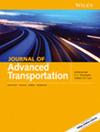Assessing the resilience of road networks in high-intensity urban development areas is crucial for ensuring sustainable urban growth in the face of increasing traffic demands. Underground road networks are a key solution to alleviating surface traffic congestion and optimizing urban spatial utilization. By enhancing shared mobility on the surface, these networks contribute to reducing vehicle emissions and mitigating environmental pollution. This study explores the optimal conditions for initiating underground road network construction in high-density development areas. Using a spatiotemporal consumption model, the research calculates the maximum traffic capacity of the network while considering land use characteristics to assess traffic demand. The resilience of these road networks is evaluated through structural indicators that measure their resistance to damage and overall stability. The findings indicate that when the demand-to-capacity ratio of the road network ranges from 0.865 to 0.870, the existing road capacity becomes inadequate, necessitating the construction of underground networks to alleviate surface congestion. This study provides both theoretical guidance and practical insights for the planning and development of underground road networks, along with strategies to improve surface environmental quality.



